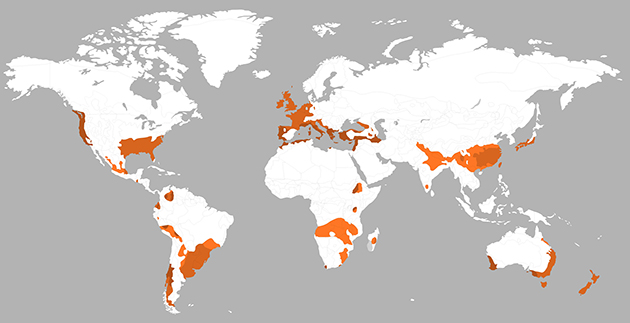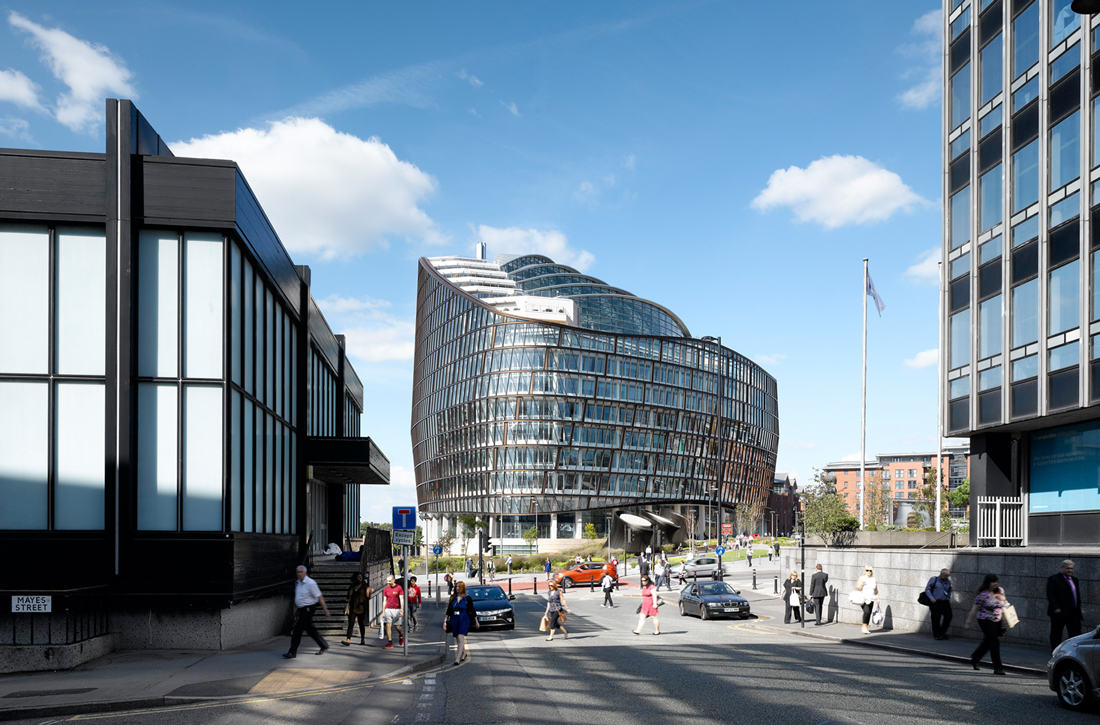
PROJECT INFO
Building type:
Offices
Year:
2016
Project Status:
Built
Gross Area:
41800 Sqm
Certificates:
LEED v2.2 NC Gold
|
LEED v4 ND (Neighborhood Development) Platinum
Climatic zone:
Temperate
MY LAST SEEN PROJECTS

PROJECT DESCRIPTION
Luminous, light, and transparent, like the “Crystal Palace,” the Jerome L. Greene Science Center is dedicated to natural light and scientific research.
The new neuroscience research facility is one of the new LEED certified buildings designed by Renzo Piano Building Workshop for the Columbia University's new Manhattanville campus in in Upper Manhattan, New York.
By situating the scientific functions above the ground level, the building can meet the city with a highly transparent, permeable, and active ground floor called the Urban Layer, which is open to the public and the larger University community and continuous across the entire campus. Together with outreach programs operating with support from the Mortimer B. Zuckerman Mind Brain Behavior Institute like the Wellness Center and the Education Lab, the Synapse—an interactive installation where the public can learn about the brain research being conducted in the building—in the main lobby on the ground floor of the building encourages public engagement with the research conducted in the building. The East-West lobby space also connects Broadway to the east with the Small Square to the west.
Publicly accessible retail and restaurant facilities complete the Urban Layer, which activates and enhance the pedestrian experience, creating complexity, balance, and a sense of inclusion. Directly above the Urban Layer, the massive and opaque second floor houses mechanical spaces.
On the research levels above the second floor, however, the building again becomes light and transparent, providing space for people to work, research, and collaborate around the perimeter of the building, where they can take advantage of the daylight. Support spaces not requiring daylight are located in the center of the building.
Two intersecting axes articulate the building’s 40,000 sq. ft. floorplate into four quadrants—on the research levels, the North-South axis is mainly dedicated to circulation and includes the elevator lobby, while the East-West axis is an active area that includes meeting rooms and break spaces on each floor and a 120-seat lecture space at the top floor. These spaces encourage collaboration among the scientists by interspersing circulation, connecting stairs, double-height spaces, and a variety of scales of meeting rooms and other interaction spaces with the research and support spaces.
Staggered roof levels further articulate the building’s volume at the top of the building, where there are two accessible terraces overlooking the city and the Hudson River. Like a factory, exposed machines located on the rooftop reflect the building’s complex (and beautiful) mechanical infrastructure.
The building’s architectural vocabulary of exposed steel structure and articulated details establishes a dialogue with the “DNA” of the site - the steel structure of the adjacent subway viaduct and the industrial history of the surrounding area.
AWARDS
AIANY Design Awards: Merit, AIA New York, 2018
Best Higher Education/Research Project, ENR New York, 2017
Best of Design Awards: Facade, The Architect's Newspaper, 2015
Engineering Excellence Award, ACEC New York, 2015
SUSTAINABILITY FEATURES
Innovative cooling system
High efficient façade
Sustainable building materials
Low-emitting materials and finishes
High efficient lighting
Daylight sensors
Occupancy sensors
Sustainable sourced timber
Sustainable Urban Drainage Systems
Smart design (passive design strategies)
Regional materials
Daylighting maximised
Outdoor view maximised
Sustainable transport
SUSTAINABILITY STRATEGY
Designed with science, for science, the building’s envelope subtly and innovatively addresses the building’s relationship to its surrounding environmental context in a sustainable way.
The Jerome L. Greene Science Center has been awarded LEED Gold certification from the U.S. Green Building Council (USGBC) under the New Construction rating system.
This was possible thanks to a broad spectrum of strategies, from leveraging site advantages to innovative designs to reducing energy demand, using sustainable construction techniques, selecting sustainable materials and more.
The building is part of the Columbia University's new Manhattanville campus which environmentally sustainable design and overall project plan were awarded LEED Platinum certification under the USGBC’s Neighborhood Development rating system - the highest designation in the rating system. This was the first such recognition in New York City and the first given to a campus plan anywhere in the United States.
Among the sustainable construction and design features of the buildings include:
- The actively ventilated double-skin façade of low-iron glass and the motorised shades mitigate the acoustic concerns from the adjacent subway, and further contribute to occupant comfort by creating a thermal buffer at the exterior of the building.
- Daylight harvesting allows a reduction in the use of artificial lights. intuitive lighting controls and solar sensors interconnected with the building management system automatically brings down blinds in front of the full-height glazed facades, and turns up the indirect artificial lighting inside. This strategy maximises heating or cooling efficiency, while regulating internal brightness to maximise natural light flow in the workspace and conserve energy.
- Radiant heating is emitted through the concrete floor slab at the perimeter of each floor.
- In order to reduce the energy load for heating at the Greene Science Center, heat recovery system are fitted on air-handling units to recuperate heat from the exhausted air and to reuse it to the supplied air.
- Chilled beams are suspended from the ceilings at the perimeter of the floors and within the major open laboratory spaces. This reduces energy demand for air conditioning.
- High-reflective “cool roof” materials protect against the urban heat island effect and reduce greenhouse gas emissions. In addition, light-coloured paving materials was also specified to further minimise the heat island effect.
- Healthy indoor finishes with low and zero VOC (volatile organic compound) content are selected for the interior spaces.
- Building products were procured from local and regional manufacturers within 500 miles of the project site to reduce embodied carbon emissions and minimised the University’s carbon footprint when constructing the buildings.
- Alternative forms of transportation through proximity to mass transportation are encouraged to reduce the carbon footprint of occupants travelling to and from the buildings; shuttle bus service between campuses and transportation hubs, bicycle racks and bicycle share programs, and carpool programs.
ENERGY DATA
Energy consumption:
N/A (N/A )
Consumption type:
Annual carbon footprint:
N/A (N/A )
Climate zone:
Temperate
Min. temperature =
N/A
Max temperature =
N/A
RH =
N/A

CLIENT
Client:
Columbia University
DESIGNERS
Architect:
Architect:
Renzo Piano Building Workshop , A.Chaaya , S.Drouin , K.Doerr , R.Tse , L.Coreth , E.Garnaoui , C.Ruiz , W.Antozzi , F.Becchi , A.Belvedere , M.Busk-Petersen , E.Chassang , P.Colonna , N.Delevaux , A.Fritzlar , C.Issanchou , B.Malbaux , A.Saoud , T.Zamfirescu , J.Lim , K.Songkittipakdee , R.Subramanian , O.Aubert , C.Colson , Y.Kyrkos , Davis Brody Bond LLP , Body-Lawson Associates
CONSULTANTS
Acoustical consultant:
Shen Milson & Wilke
Building services engineer:
Jaros , Baum & Bolles
Cost consultant:
Davis Langdon
Green certification consultant:
Atelier Ten
Lighting consultant:
Arup
Other:
Stantec
Specialist consultant:
Jacobs Consultancy , VDA , Mueser Rutledge , Field Operations , IBA , Sam Schwartz Engineering , Aggleton & Associates , WJE Engineers & Architects , SEA Consulting , Pentagram
Structural Engineer:
WSP , Parsons Brinkerhoff
Sustainability consultant:
Atelier Ten
CONTRACTORS
Contractor:
Lendlease (US) Construction LMB Inc
OTHER PROJECTS BY TEAM
.jpg)
.jpg)
Cambridge, MA, USA | 2014
SIMILAR PROJECTS

Avenida República do Chile - Centro, Rio - Rio de Janeiro, Brazil | 2013

.jpg)

.png)

Via Filippo Turati, 25, 20121 Milano, Italia | 2012

Via Energy Park, 20871 Torri Bianche MB, Italy | 2009


.jpg)
.jpg)



.jpg)
.jpg)

.jpg)
.jpg)
Seattle, WA, USA | 2012
.jpg)









Via Umberto Forti, 1, 56121 Montacchiello PI, Italia | 2016

.jpg)
Via Chiese, 72, 20126 Milano MI, Italia | 2018
.jpg)
Viale della Liberazione, 20124 Milano MI, Italia | 2017
.jpg)
Via Bernina, 12, 20159 Milano MI, Italia | 2012

.jpg)


New Cairo City, Cairo Governorate, Egypt | 2016




Parma, Province of Parma, Italy | 2018
.JPG)
.png)




Via Fabio Filzi, 29, 20124 Milano MI, Italia | 2015

Piazza Tommaso Edison, 20123 Milano MI, Italia | 2017
